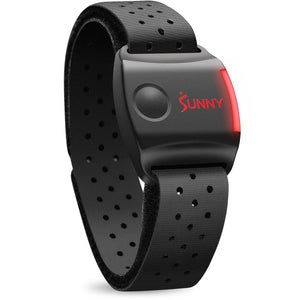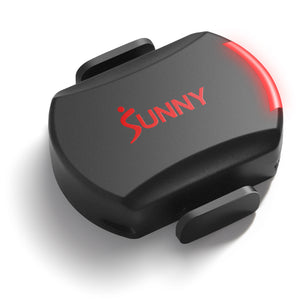With all the fitness apps, wearables, and Smart equipment on the market, the vast amount of health data available at the touch of a button can leave your head spinning. However, all this smart data can be a key tool in achieving your fitness goals.
We often think of tracking body weight as the best way to measure fitness and health progress. The truth is, this is ONE of many ways to observe improvements, and it's typically not even the best way. That’s where smart data comes in! Measuring metrics like heart rate, muscle mass, body fat, number of daily steps, distance ran/walked/biked/rowed, and more. Using this data together as a comprehensive look into your overall health can paint a better picture than measuring body weight alone. Additionally, your individual fitness and health goals will determine which metrics you monitor. This allows you to track your progress in a way that makes the most sense for you.
So, where to start? Let’s take a look at how data can help you meet your fitness goals and which metrics will be most helpful to you!
3 Ways Data Can Help You Meet Your Goals
You might be wondering how all this data will contribute to an expedited path toward your fitness goals. Here are a few ways smart data can help you along your fitness journey!
1. Taking Pressure Off Weight Loss and Aesthetic-Based Goals
If you’re trying to lose weight for health reasons or working on building your six-pack, your goals are completely valid. However, these types of goals often yield slow progress and can take a significant amount of time to achieve your desired results. And that’s not a bad thing! It’s important to have both long- and short-term goals. But if you find yourself feeling down about not seeing immediate results, it can be helpful to look toward progress in other areas of your fitness journey to take the pressure off hitting a certain number on the scale.
2. Observing Small Changes Will Keep You Motivated
Setting short-term goals and tracking the progress of those goals is a great way to stay motivated. Seeing small bits of progress each week is encouraging and will build your determination to keep going.
3. The Act of Monitoring Will Hold You Accountable
The simple act of monitoring yourself might be one trick to keep you accountable for your fitness routine. For example, if your goal is to hit 10,000 steps per day, keeping a close eye on your daily step count will encourage you to boost your daily movement.
Which Metrics Are Most Helpful?
With so many different ways to track metrics, you want to avoid overwhelming yourself with an influx of information. Here are a few metrics that are generally most helpful, as well as metrics to pick for your specific fitness goals.
Resting Heart Rate
It’s important to be aware of your normal resting heart rate. Not only does it indicate your fitness level, but it also alerts you to any other health issues that might be occurring in your body (i.e., illness, stress, electrolyte imbalance, lack of sleep, etc.).
To get a true read on your resting heart rate, measure it first thing in the morning before getting out of bed. After several days of doing this, you will get a pretty good idea of what your normal resting heart rate is. A healthy resting heart rate is anywhere between 60-100 beats per minute.
Once you have your ‘normal’ resting heart rate, take note of any deviations. As you make progress along your fitness journey, you may notice that your resting heart rate decreases. Conversely, any increase in heart rate could be a sign of oncoming illness or excessive stress, a signal from your body to take a rest day or two.
Daily Step Count
With many of us being sedentary throughout the day, monitoring how much you move is of the utmost importance. While it turns out the recommended 10,000 steps per day initially came about as a marketing ploy, there is now research supporting that number. A higher daily step count has been linked to boosted longevity, better mobility, improved mental health, and longer health span.
You may not even realize how little you walk throughout the day, so being mindful of your step count is a great metric to keep tabs on.
Body Fat Percentage and Muscle Mass
These two metrics are specific to individual goals, and may not be right for everybody. If your goal is to reduce body weight, measuring body fat percentage and muscle mass is a more effective method of tracking progress.
Behind weight loss, the true goal is to decrease body fat. Nobody wants to lose muscle mass, right? Taking a deeper look at your body composition tells a better story. After starting a new fitness regimen, you may lose body fat and increase muscle mass, but that needle on the scale remains stubbornly the same. This can feel like you’ve made no progress if you’re just looking at overall pounds, when in reality you’ve made some amazing changes to your body! Being aware of shifts in body fat and muscle mass helps keep frustration at bay, and allows you to know your body better.
Performance-Based Goals: Amount of Time or Distance Completed (Endurance), 1 Rep Max, Timed Distance (Speed)
Depending on what your specific fitness goals are, tracking a performance goal may help you better understand your progress. Neuromuscular adaptations can happen on average around 4 weeks, and as early as 2 weeks, into a new program(1). This means you can observe an increase in strength before any physical changes occur in your body. Stay motivated by noticing these subtle changes soon after starting your program! Scheduling regular performance tests based on your goal, whether that’s strength, endurance, or power, is a great way to acknowledge all your hard work is paying off.
How to Measure Your Data & Progress
There are many ways you can start with metric tracking. One of the easiest ways to do this is through a wearable fitness tracker, like a smartwatch. This will allow you to track your two general fitness metrics, heart rate and steps, in one place.
If you want to dive a little deeper consider investing in a smart scale, like the Composition BMI Smart Scale from Sunny! Here you can measure your body fat, muscle mass, heart rate, and countless additional metrics. All are uploaded and instantly viewable in the SunnyFit® App.
For performance-based goals, check out all of Sunny’s Smart Equipment, which can connect via Bluetooth to the SunnyFit® app. You can view all your performance metrics, like distance and speed, in real-time on the app.
Fight Burnout: Be Mindful of Your Tracking
While tracking your fitness metrics is an excellent tool to aid in achieving your goals, it can also feel a little overwhelming at times. Here are a few ways to fight burnout and keep you on track.
Don’t Overwhelm Yourself
Be smart about what you choose to track; you don’t have to measure everything! Take time to consider what smart data will be most helpful for you, and forget about the rest. Not all metrics will be relevant to you and your health journey.
Don’t Obsess Over It
When tracking data, it is important to be consistent. However, if you miss a day here and there or if you don’t meet your goal every once in a while, it’s no big deal. No need to be doing laps around your living room at 9:00 PM to make sure you hit your step count. If you find that tracking is becoming a detriment to your mental health, it may be time to back off for a bit.
Keep Your Data All In One Place
Use a single notebook or app (we think SunnyFit® is a pretty great option 😉) to keep all of your measurements in one place. You will feel organized and know exactly where to find everything, rather than having to rifle through a bunch of loose paper or 10 different apps.
Intentionally Tracking Your Health
Keeping tabs on your smart data is an excellent way to stay in tune with your body and fitness progress. Use this tool to help you stay motivated and accountable, while also gaining a better understanding of how your body is adapting to your training program. We can’t wait to see all the progress you make with your smart data!
1. Hughes DC, Ellefsen S, Baar K. Adaptations to Endurance and Strength Training. Cold Spring Harb Perspect Med. 2018 Jun 1;8(6):a029769. doi: 10.1101/cshperspect.a029769. PMID: 28490537; PMCID: PMC5983157. Accessed 8 January 2023.
![]()
![]()
























Add Your Name & Email
Please enter your name and email to continue.We won’t display your email publicly.